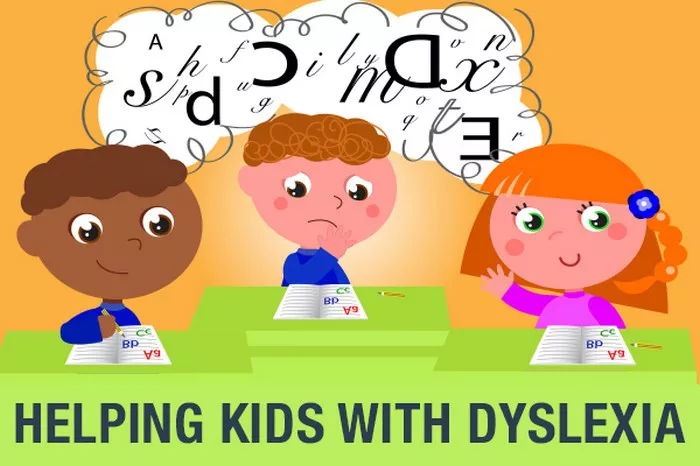Dyslexia and autism spectrum disorder (ASD) are both neurodevelopmental conditions that can impact an individual’s learning and social interactions. However, despite sharing some similarities, they are distinct disorders with unique characteristics. In recent years, there has been ongoing debate and research exploring the relationship between dyslexia and autism, leading to questions about whether dyslexia should be considered part of the autism spectrum. This article aims to delve into this complex topic, examining the similarities, differences, and current understanding of dyslexia and autism spectrum disorder.
Understanding Dyslexia:
Dyslexia is a specific learning disability that primarily affects reading and related language-based processing skills. Individuals with dyslexia may experience difficulties with decoding words, spelling, and fluent reading despite having normal intelligence and adequate educational opportunities. It is often characterized by difficulties with phonological processing, which involves the ability to recognize and manipulate the sounds of language.
Common signs of dyslexia include:
1. Difficulty with phonemic awareness (identifying and manipulating individual sounds in words).
2. Slow or inaccurate reading, often accompanied by word substitutions, omissions, or reversals.
3. Poor spelling and difficulty with written expression.
4. Challenges with rapid naming tasks, such as naming letters or digits quickly.
5. Difficulty with reading comprehension and understanding complex sentences.
Despite these challenges, individuals with dyslexia may excel in other areas, such as creativity, problem-solving, and visual thinking. Dyslexia is believed to have a genetic basis and tends to run in families.
Understanding Autism Spectrum Disorder:
Autism spectrum disorder (ASD) is a complex neurodevelopmental condition characterized by persistent challenges in social interaction, communication, and restricted or repetitive behaviors. The term “spectrum” reflects the wide variation in how ASD affects individuals, ranging from mild to severe symptoms and varying combinations of strengths and challenges.
Common characteristics of autism spectrum disorder include:
1. Difficulty with social communication and interaction, such as understanding nonverbal cues, maintaining eye contact, and developing friendships.
2. Repetitive behaviors or restricted interests, such as insistence on sameness, repetitive movements (e.g., hand flapping), and intense focus on specific topics.
3. Sensory sensitivities or difficulties, such as heightened sensitivity to sounds, lights, textures, or certain smells.
4. Challenges with flexible thinking and adapting to changes in routines or expectations.
ASD is also believed to have a strong genetic component, although environmental factors may also play a role in its development. Early intervention and support can significantly improve outcomes for individuals with autism spectrum disorder.
Exploring the Relationship:
Given the overlapping symptoms and neurodevelopmental nature of dyslexia and autism spectrum disorder, it is understandable why some researchers and clinicians have sought to explore their relationship. Both conditions involve differences in brain structure and function, particularly in areas related to language processing, attention, and social cognition.
Some studies have found higher rates of dyslexia among individuals with autism spectrum disorder compared to the general population, suggesting a potential association between the two conditions. However, it is essential to recognize that co-occurrence does not necessarily imply a causal relationship or shared underlying mechanisms.
Furthermore, while dyslexia and autism spectrum disorder may coexist in some individuals, they can also occur independently. Many individuals with dyslexia do not meet the criteria for autism spectrum disorder, and vice versa. Additionally, the challenges and strengths associated with each condition can vary widely among individuals, further complicating attempts to draw clear distinctions.
It is also worth noting that dyslexia and autism spectrum disorder are diagnosed and treated differently. Dyslexia is typically identified through assessments of reading and language skills, and interventions focus on improving literacy skills through specialized instruction and accommodations. In contrast, autism spectrum disorder is diagnosed based on observations of behavior and developmental history, and interventions often involve a combination of behavioral therapies, educational supports, and individualized strategies to address social and communication difficulties.
Conclusion:
In conclusion, while dyslexia and autism spectrum disorder share some similarities, they are distinct neurodevelopmental conditions with unique characteristics and diagnostic criteria. While there may be overlap in some cases, particularly regarding difficulties with language and social interaction, it is essential to recognize and respect the diversity of experiences within each population.
Rather than viewing dyslexia as simply a subset of autism spectrum disorder, it is more accurate to understand them as separate but related conditions that can coexist in some individuals. By recognizing and addressing the specific needs and strengths of individuals with dyslexia and autism spectrum disorder, we can better support their learning, development, and overall well-being.
Further research is needed to better understand the relationship between dyslexia and autism spectrum disorder and to explore potential shared biological and cognitive mechanisms. By continuing to investigate these complex conditions, we can improve our understanding and enhance the effectiveness of interventions for individuals affected by dyslexia, autism spectrum disorder, or both.


